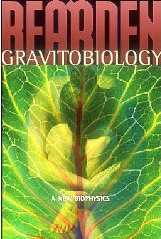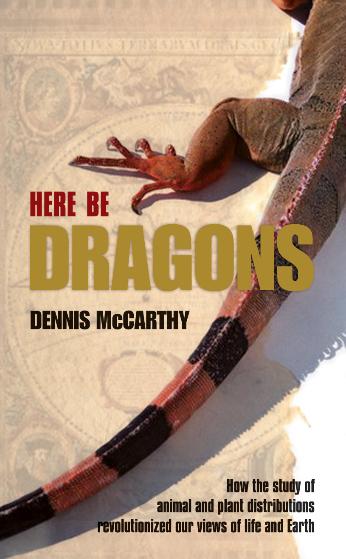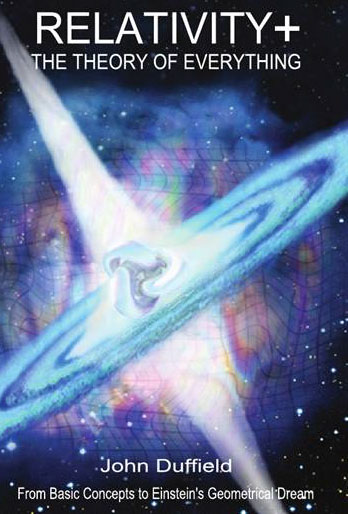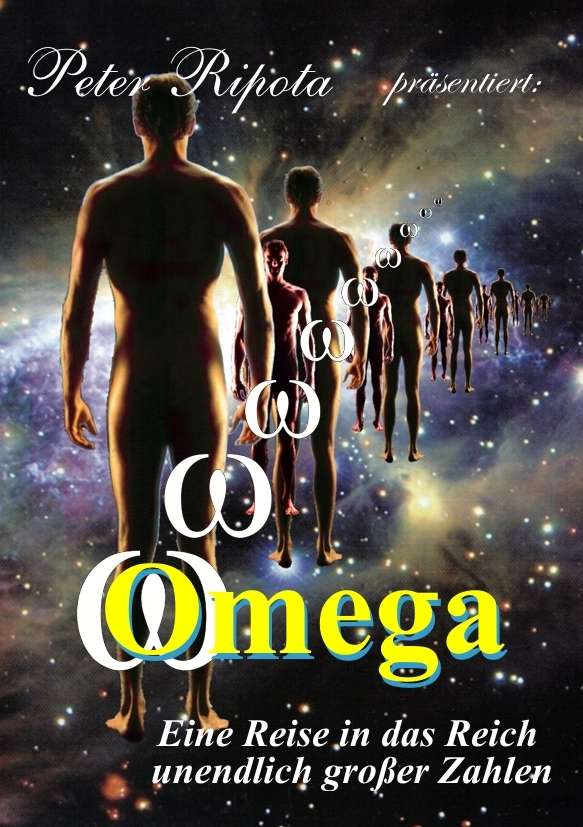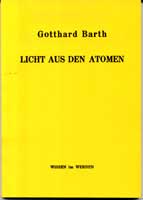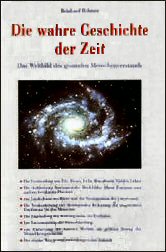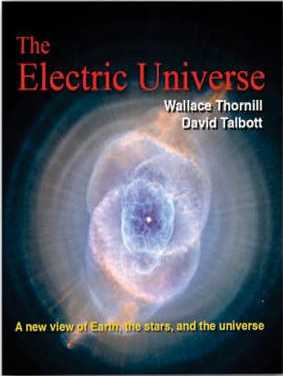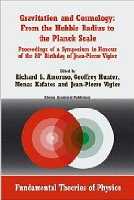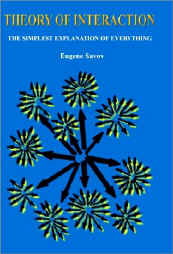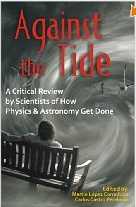Pages: 178
Publisher: Tesla Book Company
Year: 1991
ISBN: 0914119079
ISBN: 978-0914119074
Websites: www.cheniere.org/sales/online-store.htm
Bearden does an excellent job of describing scalar technology at least the theory aspect. This book is written in the attempt to bring scientists and EE closer to the truth on what is missing in physics to unify the three fields: QM,GR,EM (what Einstein was trying to do but failed to achieve Bearden explains why). I would recommend this to everyone but only those who are truly interested in physics, Tesla, Einstein, & perhaps technology would find this work to be of much helpful knowledge. For myself personally, Bearden has showed me the path that no one has done before. For myself coming from a Tesla background Bearden goes a step further and describes how physics was side tracked and how to get back on the right track through the many many references that is cited, all coming from a man that devoted his life for science. This book is a must for the pioneer in physics. -- Shane M Gillespie, amazon
Pages: 256
Publisher: Oxford University Press
Year: 2009
ISBN: 0199542465
ISBN: 978-0199542468
Pages: 222
Publisher: Corella Limited
Year: 2009
ISBN: 0956097804
ISBN: 978-0956097804
Pages: 140
Publisher: Books on Demand GmbH, Norderstedt (Germany)
Year: 2008
ISBN: 978-3837058123
Websites: www.peter-ripota.de/mathe/index.php
Read some of its content now
View count: 1
Pages: 89
Publisher: Cl?ment Juglar, Paris
Year: 2005
ISBN: 2908735202
ISBN: 978-2908735208
Websites: allais.maurice.free.fr/Paradoxe.htm www.amazon.fr/Albert-Einstein-un-extraordinaire-paradoxe/dp/2908735202/ref=sr_1_1?ie=UTF8&s=books&qid=1224516585&sr=8-1
Publisher: Naturphilosophischer Verlag Reinhard Rohmer
Year: 1998
ISBN: 3000010386
ISBN: 978-3000010385
1. Teil: Das Weltbild des gesunden Menschenverstandes
-
?ber die Grundlagen und Mechanismen unseres Erkenntnisverm?gens
-
Das Seiende, Materie und Bewegung
-
Die Materie
-
Die Bewegung
-
Die Zeit
-
Bau und Mechanismus des Universums
2. Teil: Das schiefe Weltbild der modernen Physik
-
Die teilweise haarstr?ubenden Denkfehler der ber?hmten Physiker allgemeinverst?ndlich dargelegt durch kritische Stellungnahme und Erl?uterungen zu bedeutenden wissenschaftlichen B?chern.
-
Die zahlreichen Irrt?mer und Erkenntnisl?cken der Kosmologie und Teilchenphysik allgemeinverst?ndlich dargelegt durch kritische Stellungnahme und Erl?uterungen zu bedeutenden wissenschaftlichen Aufs?tzen und B?chern.
View count: 1
The particle theory of light is now called the "photon theory." This theory is that photon particles are created and destroyed by atoms when electrons change quantum levels. This is a simplistic view but is sufficient for now. The particle theory of light was the dominant theory of light on two occasions. Newton believed light was a particle, then called a corpuscle, and his theory held until the very early 1800s. Einstein believed light was a particle, now called the "photon," and his theory has been in force since 1924 and continues to be the dominant theory at the current time.
The wave theory of light is called the "aether theory" or more commonly the "ether theory." One reason for having two spellings is to differentiate the ether that fills the universe versus the gas that can be used to put people to sleep. The ether theory is that the universe is filled with small particles, which I call "ethons." Ether is considered a medium for light, meaning light is a "signal" or "wave" that travels through the medium of ether. The ether theory of light was in favor with the scientific community from the very early 1800s to 1924.
Some people believe in both ether and photons. For example, Einstein admitted that his General Theory of Relativity would not work without ether, but the ether of Einstein's general relativity is vastly different from the ether of Nikola Tesla and Albert Michelson, and will not be discussed in this book.
- Chapter 1: Overview
- Chapter 2: The Stanford Linear Accelerator Experiment
- Chapter 3: The Hafele-Keating Experiment
- Chapter 4: The Anemometer Metaphor
- Chapter 5: What Does the Hafele-Keating Tell Us
- Chapter 6: The Moving Target Laws
- Chapter 7: Secular Aberration
- Chapter 8: My First Experiment
- Chapter 9: My Second Experiment
- Chapter 10: Lunar Laser-Ranging Experiments
- Chapter 11: The Photoelectric Effect, the Compton Effect, and Blackbody Radiation
- Chapter 12: Is the Speed of Light a Constant
- Chapter 13: General Relativity and the Ether
- >Chapter 14: Aberration and Ether
- Chapter 15: Atmospheric Refraction and Ether
- Chapter 16: The De Witte Effect
- Chapter 17: An Article on Tesla
- References
- Appendix A - Replicating the Kehr Experiments
Pages: 374
Publisher: Gerald Lebau
Year: 1965/1993/2003
ISBN: B0007FLMMS
Websites: stores.lulu.com/glird
Download and read it now
View count: 1
Pages: 642
Publisher: Gerald Lebau (du Gabriel)
Year: 1989
Websites: spinbitz.net/anpheon.org
Download and read it now
The following was the preface to a prior unpublished manuscript. It remains appropriate here:
"Over the many years that I have been working out these concepts I have made the most excruciatingly minute examination of the implications of all sorts of ideas, all kinds of data and reported results of very many scientific experiments, numerous accredited, discarded, and some few new original theories. Books, then paragraphs, then sentences, then single words, then the shades of meanings of such single words, then the historical development behind those shades of meanings were sifted and peered at close.
I was like a member of a lost tribe, hidden deep in a blind cave from which no one knew the exit. Our scouts (scientists, philosophers, etc.) had long been seeking the exit, had once thought they saw light, but on following the trail toward it found only blackness when they got there. Now, having explored the area most intensively, they have continued digging painfully onward. Sitting back in the pack I found myself slightly interested by the scouting reports and decided one day to see what they were doing. I began after them, in the dimness of the caverns, tracing out their trail, far, far back. Along the back-trail, moving steadily, I spied the light they had long since seen, and started toward it. As I move, I glide swiftly past boulders and rocks, wondering how the scouts could have missed the ever-brightening exit-way. Then the light dims down and dies! I go back. I shrink. Small me glides swiftly toward the light, passing the tremendous pebbles and chunks of dust on the smooth floor. I look closely at that floor, following the trail, around this pebble, over this mounded obstacle of speck, into this giant molecule, around that big atom. Smallest I glide swiftly along the floor, atom by atom of its structure. Running as fast as I can, but seeming to stand still, I bask in the brightening light. I look far up and around, and see the pick marks and canyons the scouts have blasted in their tunnel. I see them, now, in the almost infinite distance a few rods away, working hard at the steadily harder rock face. They work in darkness, but I run after them in the light. The light! It comes from under my feet! I have concentrated down to so fine a focus as to see every undulation in the structure of the floor. Down little cracks, and up the other side I'd scurried. And now, between a few of the floor's atoms I spy the brightness. I look closer. I approach. I grow smaller. I stand, now, between two boulderish atoms. But what is this? How can there still be a floor between the atoms the floor is supposed to be made of? I touch, and the floor is soft and yielding. The light is bright and dazzling. I push my finger and it passes through! I feel clean air, wind upon my finger tip and know. It is the way!"
We shall find that the kinetic atomic theory that matter is made of ultimate particles got in the way of correct understanding of the equations that describe and generalize experimental results and of the physical experiments that helped refine those equations. As we study the actions of a real material that has no voids anywhere, as compared against the explanations based on a void space with particles scattered about within it, you will gradually understand many things. As you do you will see why the basic-particle theory is responsible for the present belief that nature is ultimately incomprehensible, thus why mathematical equations have replaced comprehension as the goal of theoretical physics. You will see why some of our deeply embedded programs need to be changed and how incredibly hard it is to do that. Along the way perhaps you may find some samples of the fun and games Science can be.
Pages: 132
Publisher: Mikamar Publishing
Year: 2007
ISBN: 0977285138
ISBN: 978-0977285136
Websites: www.holoscience.com www.thunderbolts.info
Read some of its content now
Primary subjects include: an introduction to the plasma universe; electrical challenges to Big Bang cosmology; discovery of the electric sun; and the electrical nature of comets. In language designed for scientists and non-scientists alike, the authors show that even the greatest surprises of the space age are predictable patterns in an electric universe.
This book not only complements The Electric Sky book, but actually overlaps very little, while covering cosmic quandaries and plasma and electricity in space. The chapter on the electrical properties of comets is such great material, thoroughly convincing.
Reviews:
A magnificent description of electricity in space. Authors Thornhill and Talbott offer a sweeping critique of today's popular cosmology. They show that galaxies, stars (including our Sun), and comets can be best understood through the well-tested behavior of electricity the one force about which astronomers seem to know almost nothing. Having now devoted many years to investigating this question, I am in full agreement. -- Donald E. Scott, professor of electrical engineering (retired)
On a plane back to London I read The Electric Universe from cover to cover (the light above my seat was the only one that remained on throughout the night). What a masterpiece. Each single sentence is absolutely spot-on and well formulated. This is just such a powerful textbook the potential and logic of the electric universe theory leaps off every page. The omission of mythological and other ancient data from the argument will undoubtedly help to forestall accusations of using 'tales and stories' to bolster a scientific theory. The book also conveys a strong impression that this theory has reached full maturation; it's not the incoherent ranting of someone exploding with a lot of new ideas, but obviously the fruit of many years of careful thinking and making associations. The soberness of tone and the lavish illustrations strike the right chord and I find it hard to imagine a reader who would not find the argument compelling. I have nothing to contend with concerning the main argument. -- Rens van der Sluijs
The last 150 years have seen immense progress in the understanding of electrical phenomena. Nevertheless, the conventional cosmology taught today remains essentially a theory of gravity. "The Electric Universe" presents an alternative theory that recognizes electrical forces as the dominant influence in shaping the universe, and a major factor in determining much of our cultural and historical experience. Based on well-understood principles that can be observed and demonstrated in any plasma laboratory, the electrical model also offers ready explanations for processes that continue to puzzle astronomers today. Compelling, highly readable, and superbly illustrated, this book provides a comprehensive introduction to what will surely be the beginnings of a scientific revolution in the years ahead. -- James Hogan, science/SF author
View count: 1
Contents:
- Foreword
- Introduction
- 1. What You Must Know Before You Start Working
- 2. About the Materials
- 3. Permanent Magnet Linear Motor
- 4. How it Works
- 5. The Tilted Track Linear Motor
- 6. How Can We Remove a Magnetic Load from a Permanent Magnet Track?
- 7. The Oscillating Permanent Magnet Motor
- 8. The Circular Track Motor. Cascading the Stages
- 9. The Wheel as a Rotor
- 10. Electronic Circuits for Driving and Timing
- 11. Possible Energy Resources
- 12. Conclusions
- 13. Bibliography
Forward:
I was not searching for perpetual motion. If you think so, I must disappoint you. As an electrical engineer down to earth, and a long time research worker, I was very well aware, that there could be no such thing as perpetuum mobile. You can?t cheat the laws of nature.
You can build a new type of prime mover, a new motor, or any mechanical device with one condition: the driving energy must come from somewhere. I will discuss the energy sources in Chapter 11 of this book. We cannot produce energy. We can only transform it from one form to another. How well we can transform is called efficiency. I have been looking for new and more efficient transformation possibilities. How I succeed, will now be presented to you.
If you have an inquiring mind, and you will use my results and create more and practical machines, after first working them out on paper. All are unique, and working perfectly. In exposition I will be very critical of myself. If you will follow my guiding principles, you must succeed. In case of failure, look for cause in yourself.
For some explanations I must use mathematics. I have tried to curb it to a minimum. If you are not mathematically inclined, please skip over the calculations. This will not affect you final work. A practically minded person can succeed as well without it.
Finally I will be very happy if I will hear from you. And now to work!
Pages: 71
Publisher: A. H. Winterflood
Year: 1984
ISBN: 0950900613
ISBN: 978-0950900612
View count: 1
View count: 1
Publisher: Ove Tedenstig
Year: 1998
ISBN: 9197334906
Websites: www.newphys.se/teden/Tedenstig
Pages: 557
Publisher: Springer
Year: 2002
ISBN: 1402008856
ISBN: 978-1402008856
Websites: www.yorku.ca/ghunter
Pages: 368
Publisher: Geones Books
Year: 2002
ISBN: 9549103455
ISBN: 978-9549103458
ISBN: 9549103420
ISBN: 978-9549103427
Websites: eugenesavov.net
The proposed, third for the last one hundred years, picture of the universe lacks the basic flaws of the big bang theory and explains many puzzling observations in the near and distant space. A small part of the book requires a space physics background, while most of it is written in a highly explanatory, sometimes entertaining, language. This makes the presented ideas and findings accessible to non-scientists and scientists of all persuasions. It is shown that complexity originates in the observer's mind from the discovered amazingly simple structure of reality. The book asks too many questions, gives answers, tells attractive puzzles and extraordinary predictions. Everybody interested in the origin of the universe, life and mind will be deeply thrilled by the disclosed counterintuitive simplicity of nature. The simplicity of explanation can be challenged only with a greater simplicity because of the principle of economy, which is a basic tool in science, technology and engineering. This principle says that it is a vanity to do with more what can be done with less. Nothing is simpler than one self-reproducing interaction, whose multiscale similar outcomes account for everything. The author discovered this spirally contracting and expanding interaction and the consequent fireworks like universe beginning in 1991. The book brings to light his surprising findings and their confirmation by considerations and too many observations. It is well known that nothing is more practical than a good theory. So the improvement of the quality of life depends on the advance of knowledge. The revealed firework universe rocks with its stunning self-consistence as it lucidly explains the perplexing matter-antimatter asymmetry, the normal galaxies at the fringes of the observable universe, the creation of galaxies, stars and planets, the origin of life, consciousness and many other enigmatic phenomena.
The physicist Eugene Savov gives reader a heady brew of simple logical thinking and shocking discoveries. He studies space observations and chaos theory and makes a quantum jump into new all explaining fundamental framework. Savov simply and directly shows why the near and most distant universe look alike, reveals the workings of galactic nuclei, stars, planets and many other great mysteries of modern science. The confusing discovery of planet under three suns (July 14, 2005 issue of Nature, Vol. 436, page 230) was predicted before more than three years on page 273 of this book ? "So there should be planets around the binary and multiple stars." The all explaining power of the described new basic approach is seen in everything considered in its terms. The author takes you on a road toward revealed exciting universal meaning. This seminal book unveils the simplest and therefore invulnerable to Occam?s razor and true explanation of everything. It is written for everyone who seeks real answers to the deep problems of the universe unfolding, complexity, pattern formation, self organization, synchronization, origin and evolution of life, consciousness and civilization.
From the Publisher
It took more than ten years for the physicist Eugene Savov to develop and test his ideas and findings. The result is great monumental achievement ? new self consistent and complete picture of the universe that incorporates the modern knowledge and shows the structure of reality.
View count: 1
Pages: 584
Publisher: Energoizdat / Energoatomisdat
Year: 1990/2003
ISBN: 5283032299
Read some of its content now
In Russian: ??????????????? ??????????
On the basis of the notion of ether as a real viscous and compressible gas there is given an etherdynamical interpretation of the basic material structures as well as the mechanisms of physical field interactions. Models of basic stable elementary particles, such as proton, neutron, electron, photon and also of atomic nuclei, atomic shells and some molecules are considered in detail. The etherdynamical basis of the mechanisms of strong and weak nuclear as well as electromagnetic and gravitational interactions is worked out. The etherdynamical interpretation of basic equations of quantum mechanics is given. The equations of electromagnetic and gravitational fields are made precise. The model of a stationary dynamic cosmos is worked out.
With 28 tables, 151 illustrations, 517 references.
Pages: 268
Publisher: Universal Publishers
Year: 2008
ISBN: 1599429934
ISBN: 978-1599429939
Download and read it now
Nobody should have a monopoly of the truth in this universe. The censorship and suppression of challenging ideas against the tide of mainstream research, the blacklisting of scientists, for instance, is neither the best way to do and filter science, nor to promote progress in the human knowledge. The removal of good and novel ideas from the scientific stage is very detrimental to the pursuit of the truth. There are instances in which a mere unqualified belief can occasionally be converted into a generally accepted scientific theory through the screening action of refereed literature and meetings planned by the scientific organizing committees and through the distribution of funds controlled by "club opinions". It leads to unitary paradigms and unitary thinking not necessarily associated to the unique truth. This is the topic of this book: to critically analyze the problems of the official (and sometimes illicit) mechanisms under which current science (physics and astronomy in particular) is being administered and filtered today, along with the onerous consequences these mechanisms have on all of us. Apart from the editors, Juan Miguel Campanario, Brian Martin, Wolfgang Kundt, J. Marvin Herndon, Marian Apostol, Halton C. Arp, Tom Van Flandern, Andrei P. Kirilyuk, Dmitri Rabounski and Henry H. Bauer, all of them professional researchers, reveal a pessimistic view of the miseries of the actual system, while a glimmer of hope remains in the "leitmotiv" claim towards the freedom in doing research and attaining an acceptable level of ethics in science.
Contents:
- FOREWORD, BY M. L?PEZ CORREDOIRA AND C. CASTRO PERELMAN 5
- CHALLENGING DOMINANT PHYSICS PARADIGMS, BY J. M. CAMPANARIO AND B. MARTIN 9
- THE GOLD EFFECT: ODYSSEY OF SCIENTIFIC RESEARCH, BY W. KUNDT 27
- MY STRUGGLE WITH GINSPARG (ARXIV.ORG) AND THE ROAD TO CYBERIA: A SCIENTIFIC GULAG IN CYBERSPACE, BY C. CASTRO PERELMAN 43
- BASIC CAUSE OF CURRENT CORRUPTION IN AMERICAN SCIENCE, BY J. MARVIN HERNDON 57
- THE STATE OF THE SCIENTIFIC RESEARCH IN ROMANIA, ITS CAUSES AND MEASURES TO BE ENFORCED TO REDRESS IT, BY M. APOSTOL 63
- SCIENTIFIC AND POLITICAL ELITES IN WESTERN DEMOCRACIES, BY H. C. ARP 85
- PEER PRESSURE AND PARADIGMS, BY T. VAN FLANDERN 95
- WHAT DO ASTROPHYSICS AND THE WORLD'S OLDEST PROFESSION HAVE IN COMMON?, BY M. L?PEZ CORREDOIRA 107
- THE LAST SCIENTIFIC REVOLUTION, BY A. P. KIRILYUK 131
- WHAT IS RESEARCH?, BY M. L?PEZ CORREDOIRA 159
- WHERE IS THE SCIENCE?, BY M. APOSTOL 165
- ETHICS IN SCIENCE, BY H. H. BAUER 169
- IS ETHICS IN SCIENCE AN OXYMORON?, BY C. CASTRO PERELMAN 183
Pages: 150
Publisher: Spur Dresden
Year: 1993/1996
ISBN: 3980336034
ISBN: 978-3980336031
ISBN: 3980336018
ISBN: 978-3980336017
Websites: www.miriup.de/spur
Pages: 68
Publisher: Spur Dresden
Year: 2000
ISBN: 3980336069
ISBN: 978-3980336062
Websites: www.miriup.de/spur
Pages: 534
Publisher: DTV Deutscher Taschenbuch
Year: 1978/1986
ISBN: 3423042923
ISBN: 978-3423042925
ISBN: 3825213897
ISBN: 978-3825213893
